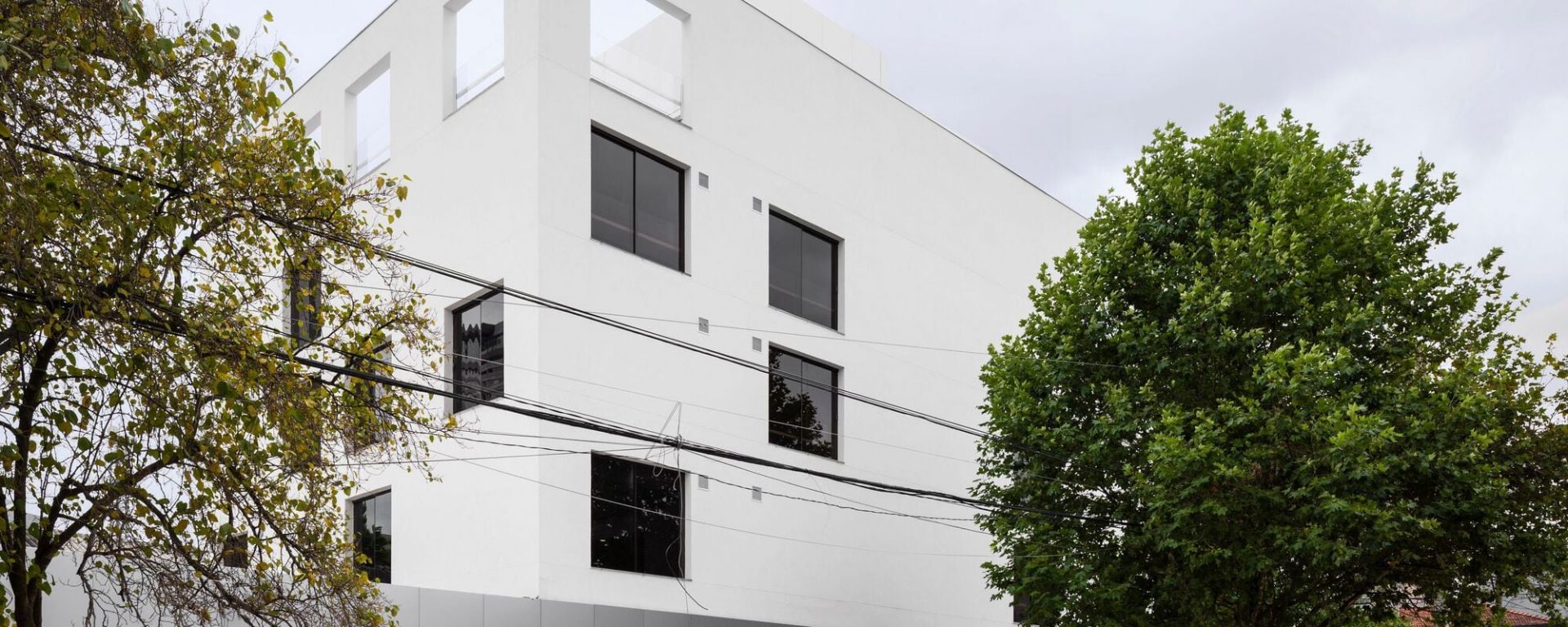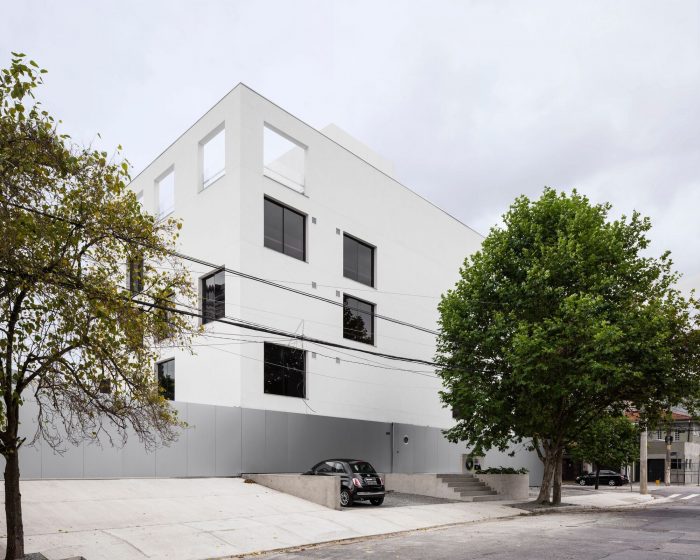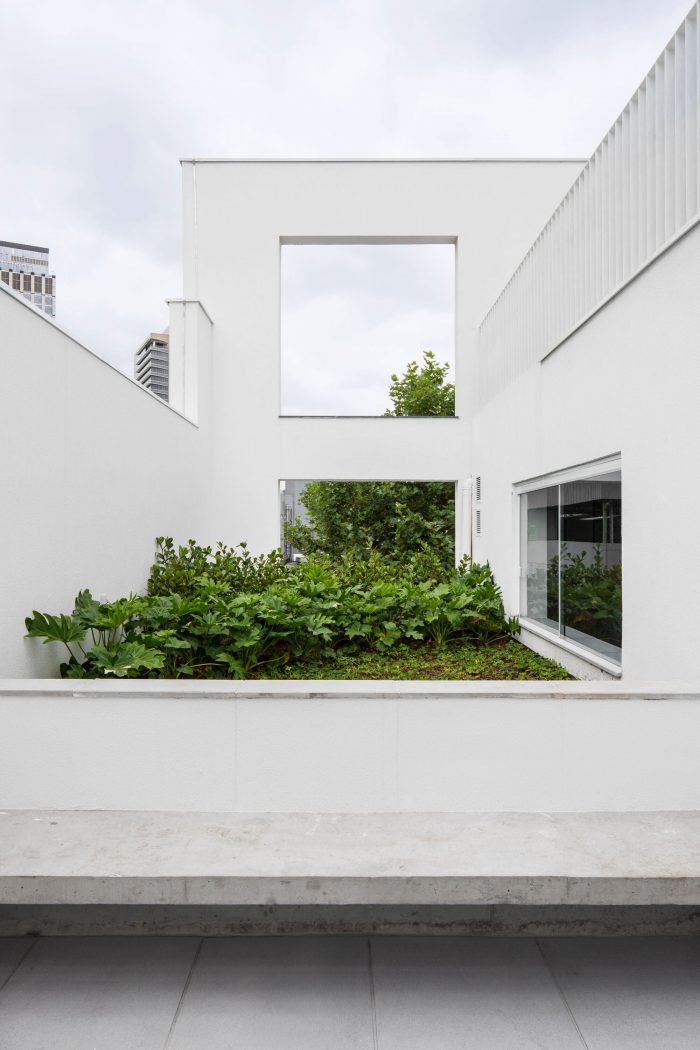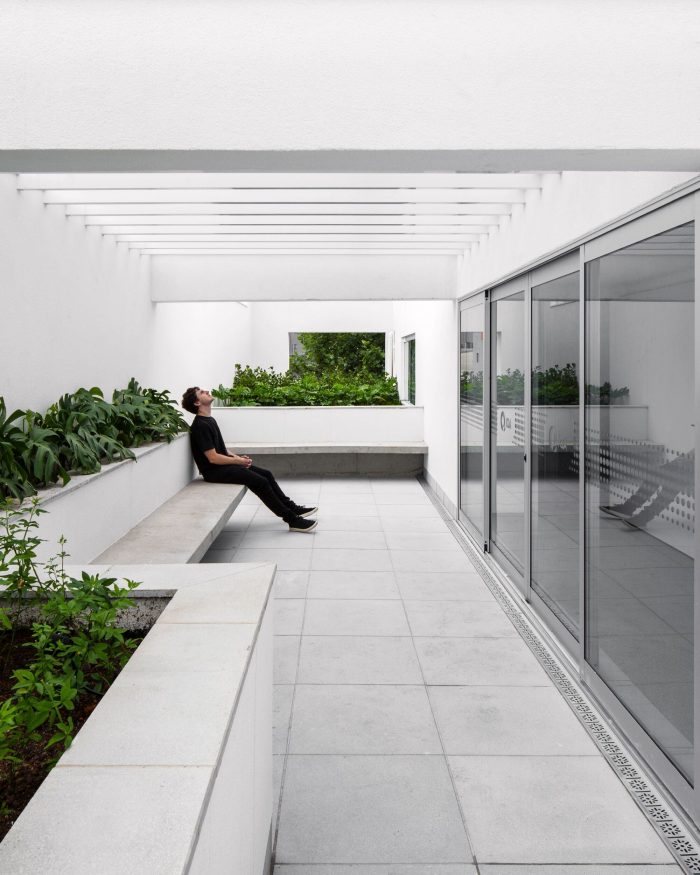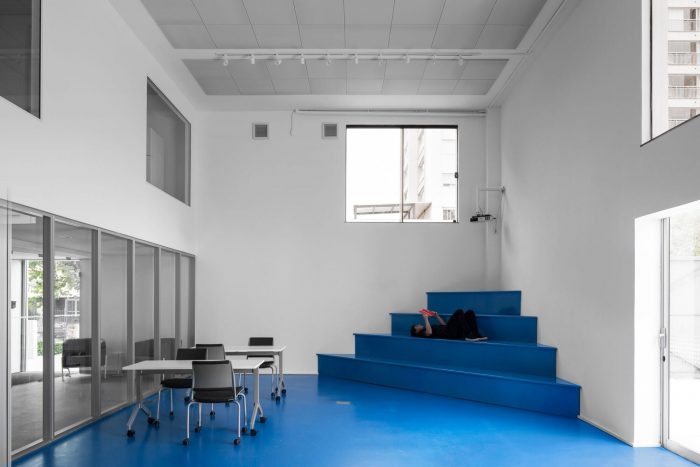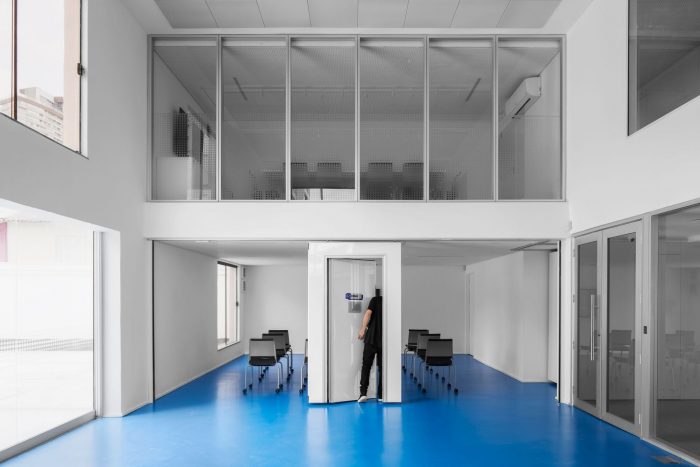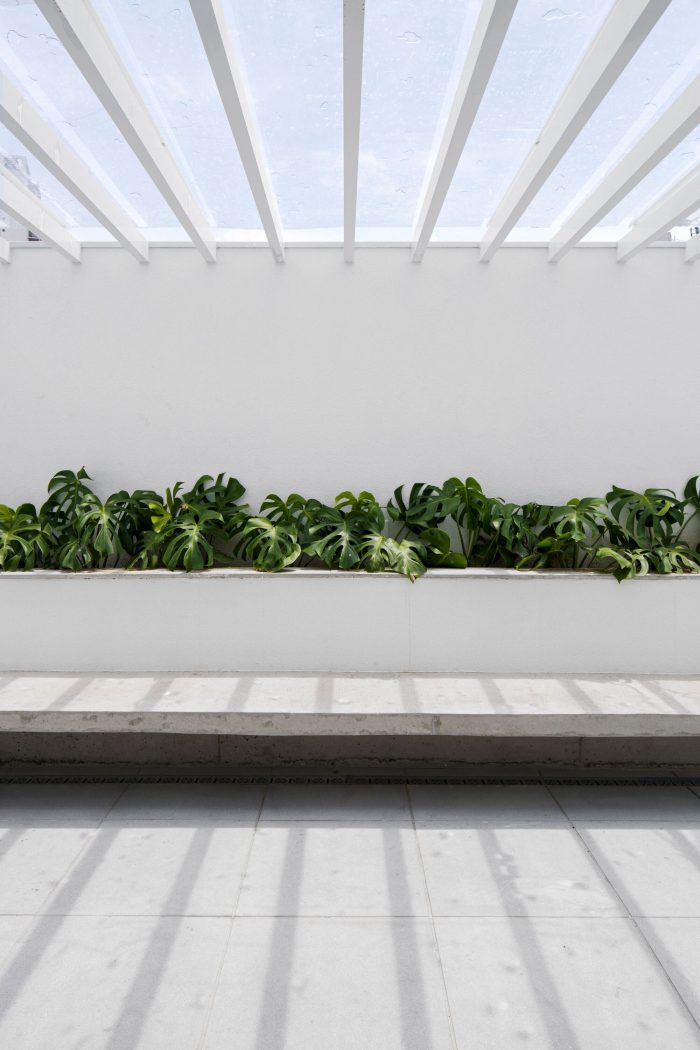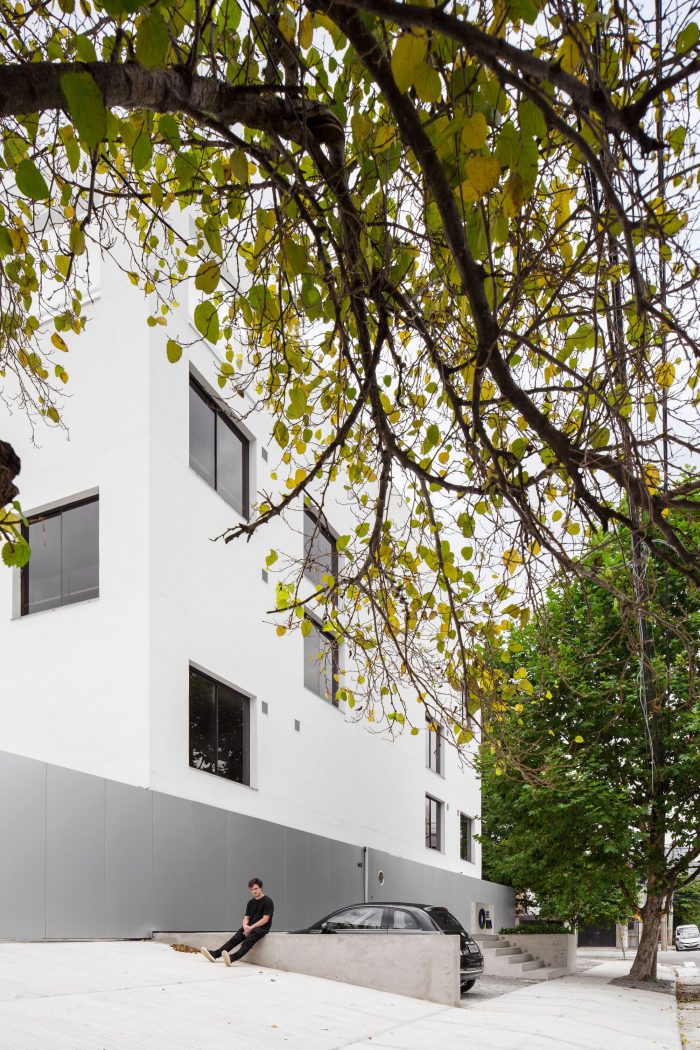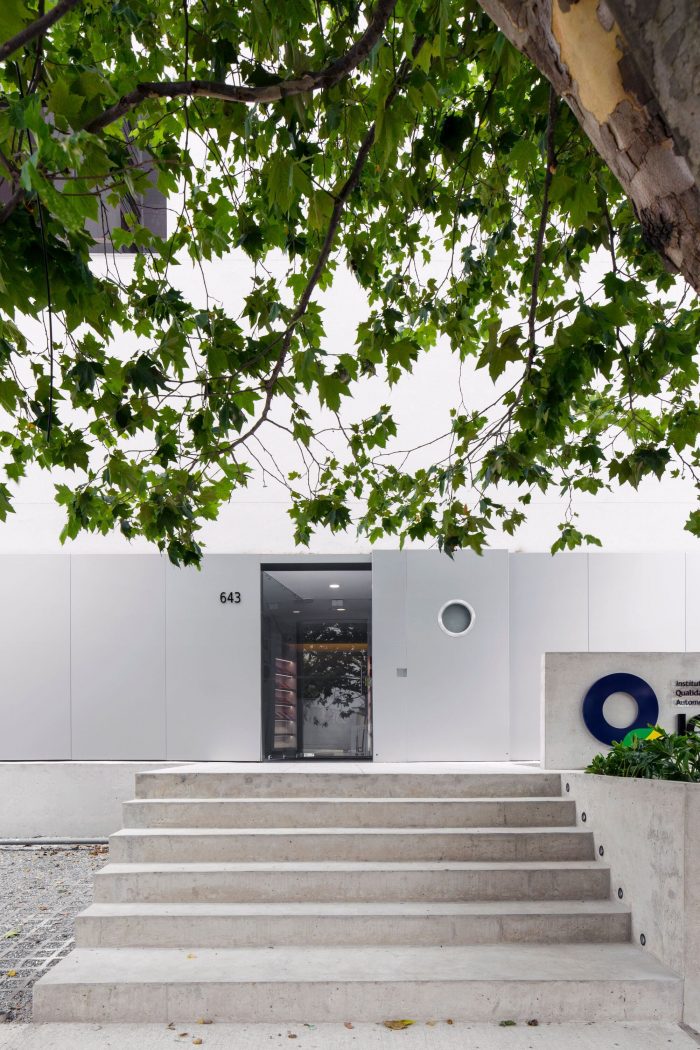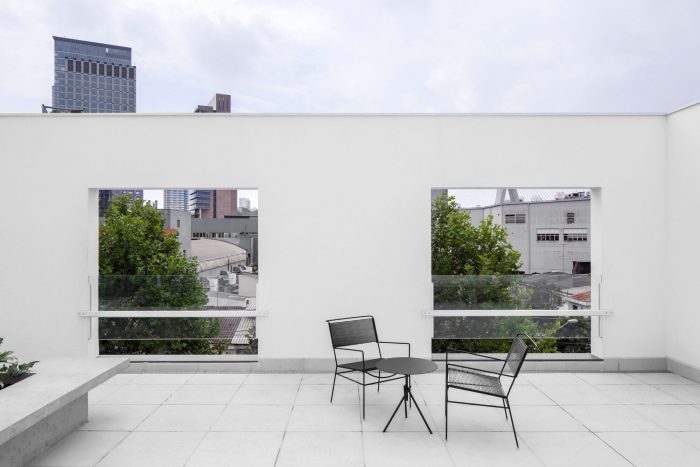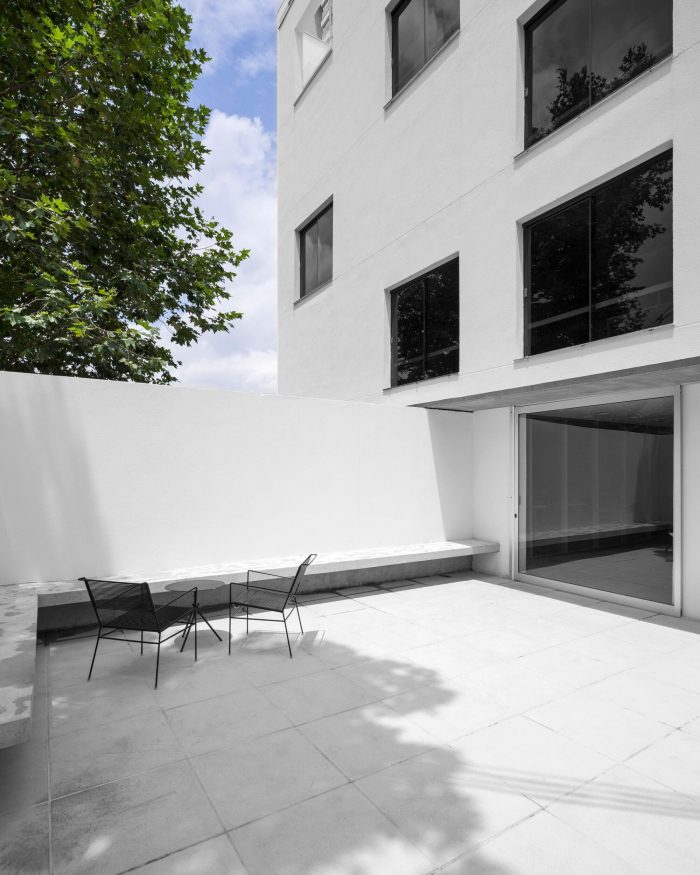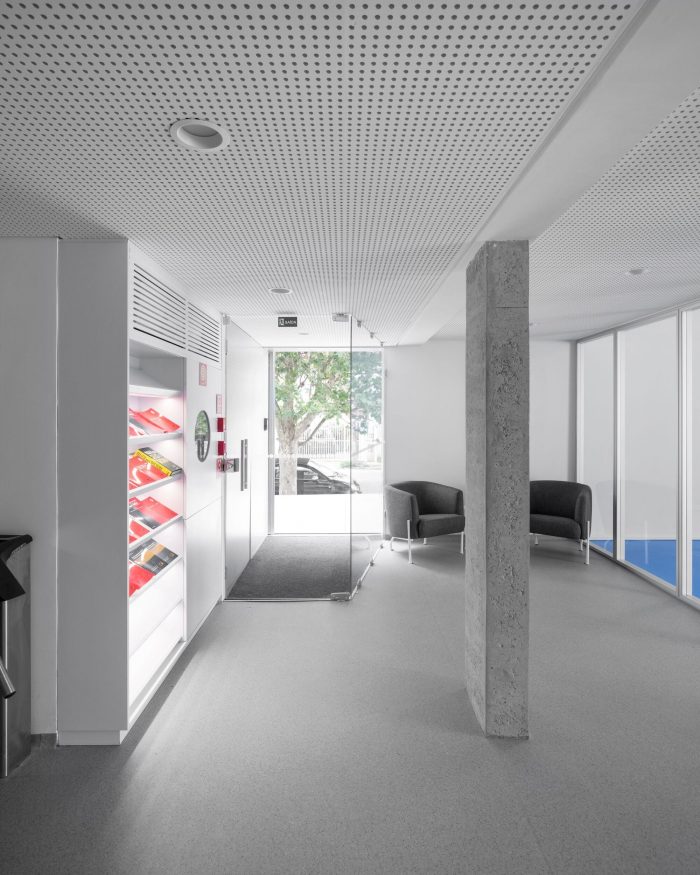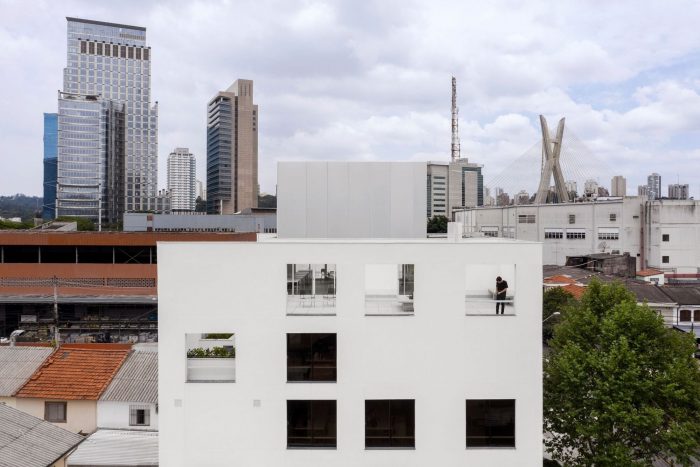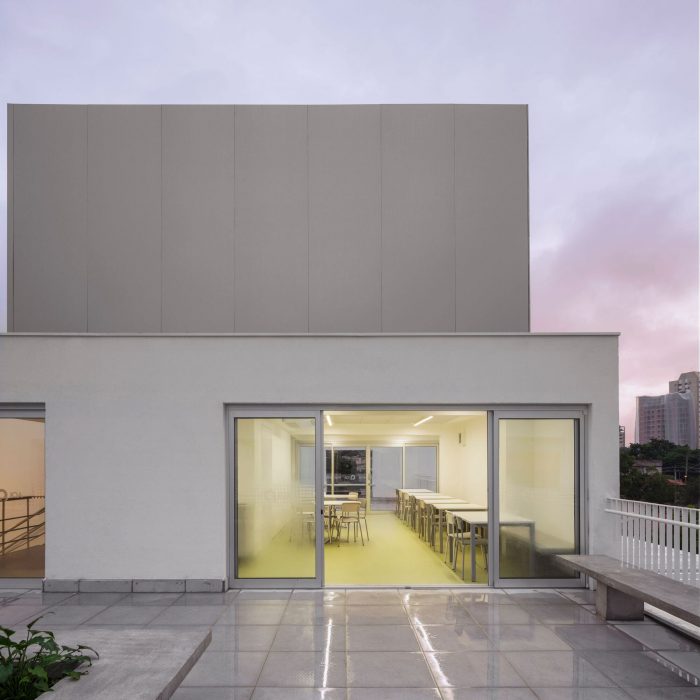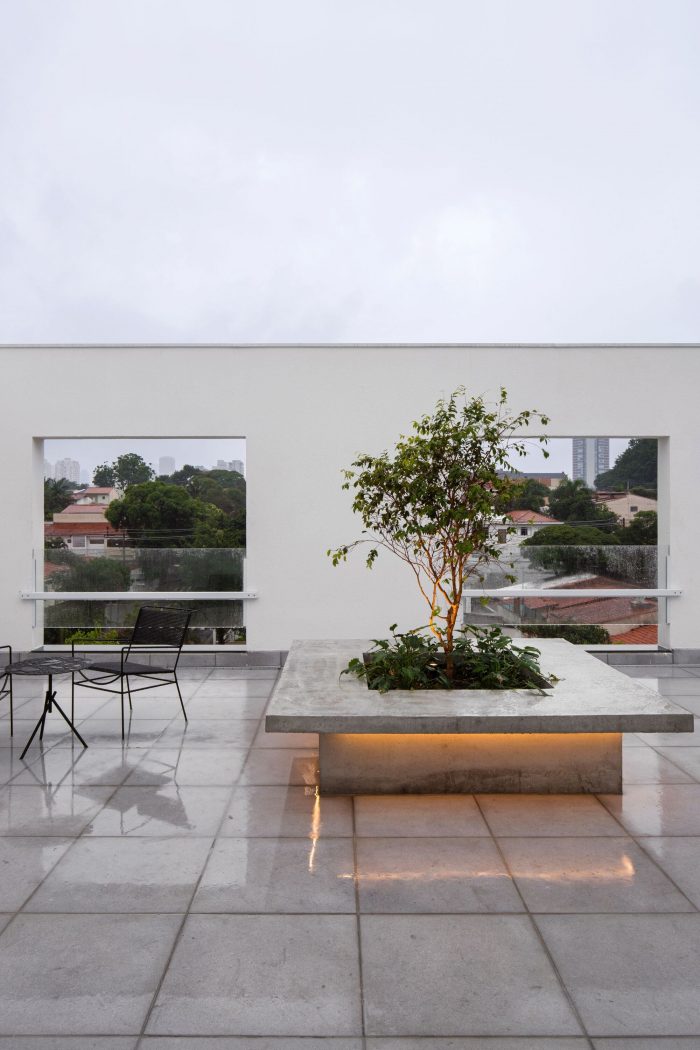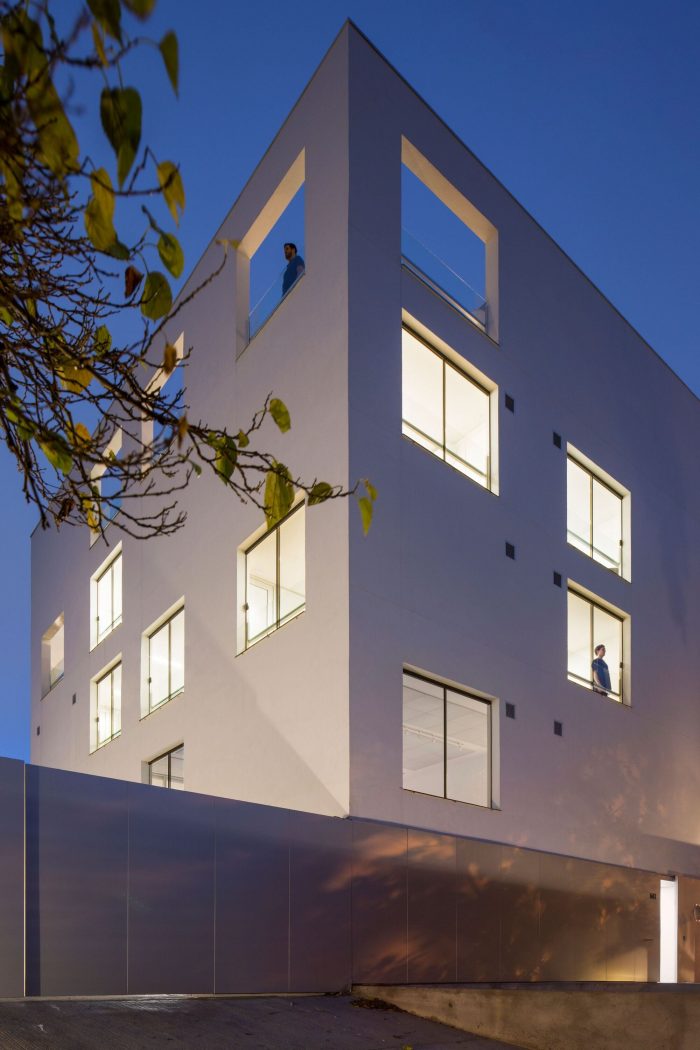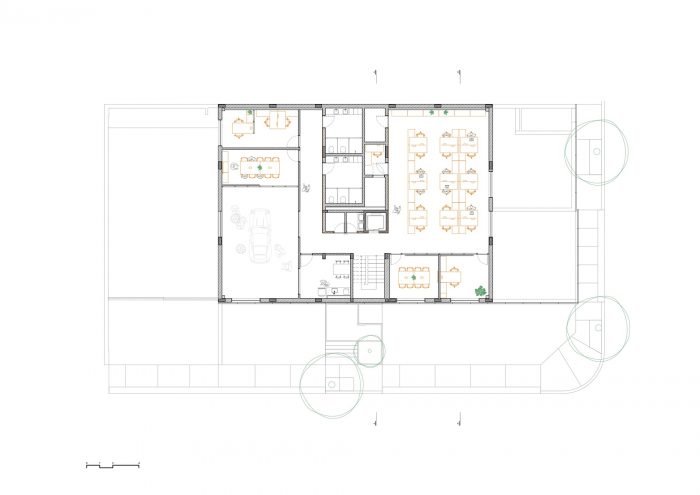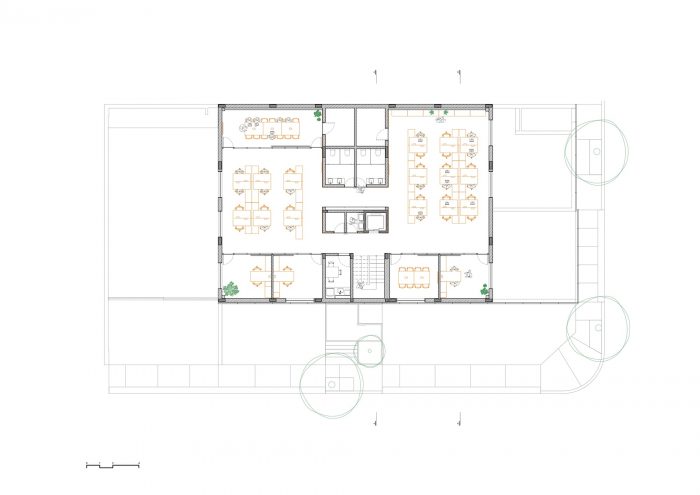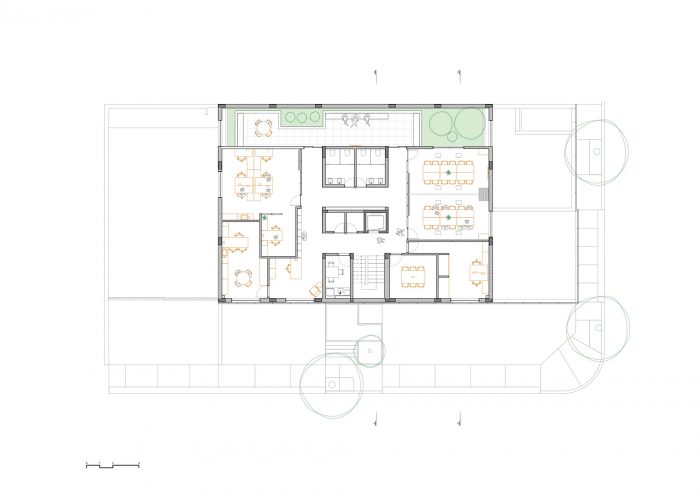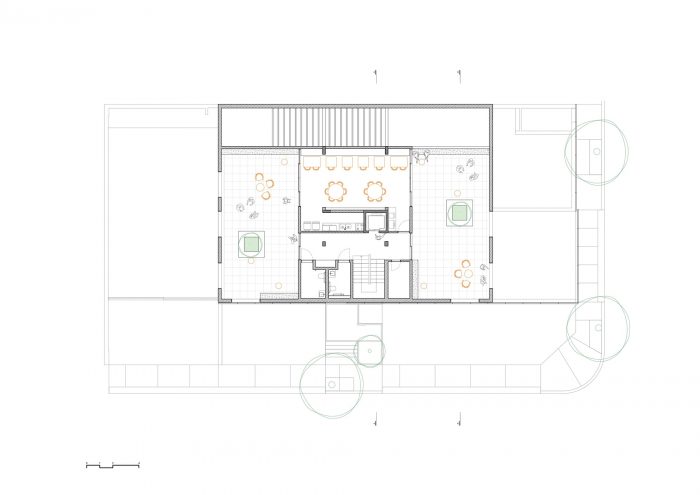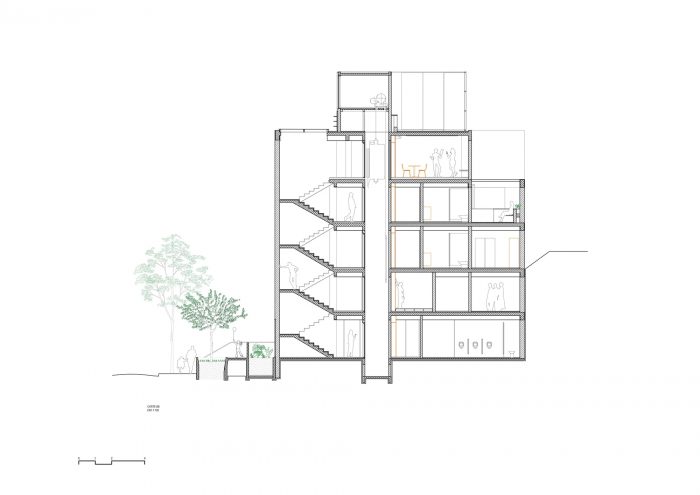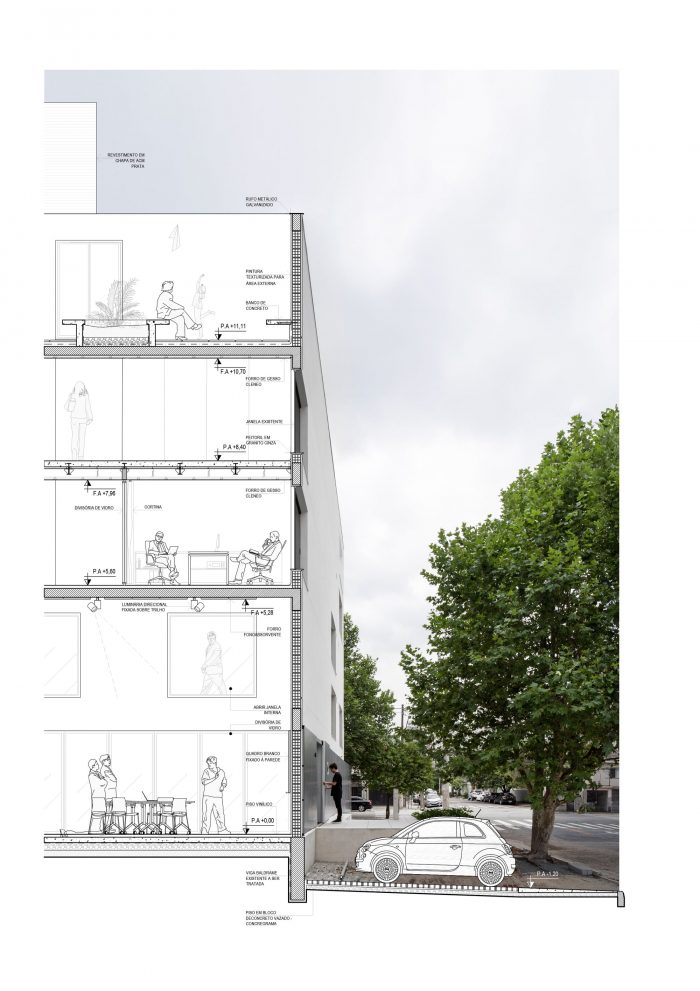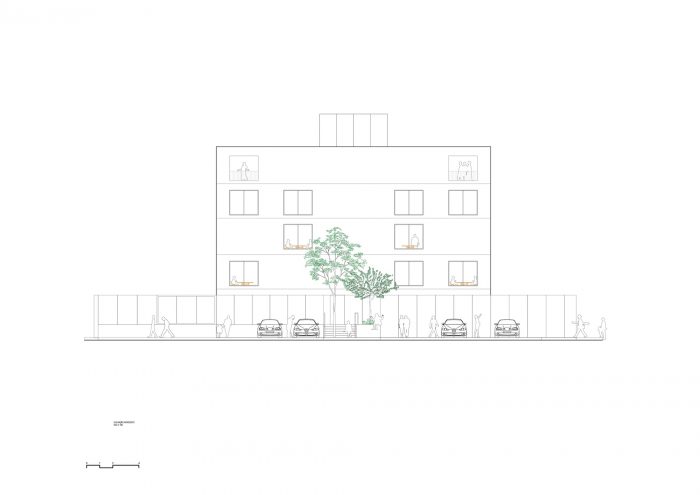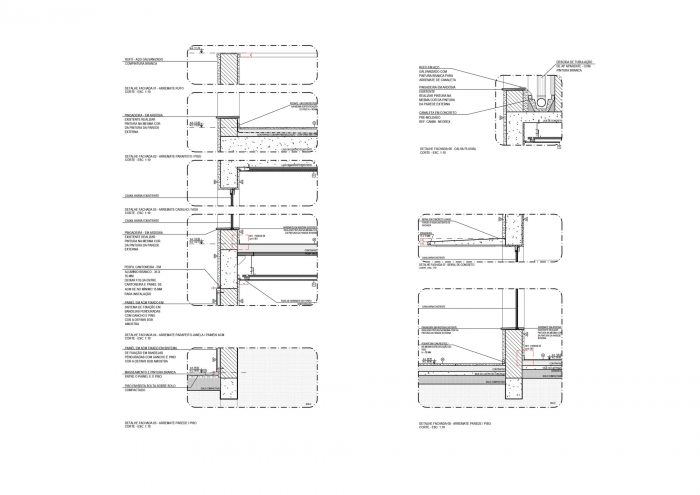干预的主要目的是将一栋建于21世纪初的新古典主义风格的废弃建筑改造成一栋旨在达到新的占用标准并与城市建立更现代和直接关系的建筑。
The main objective of the intervention was to transform a building in disuse of Neoclassical style built in the early 2000s into a building that aims at new occupation standards and a more contemporary and direct relationship with the city.
由于该物业位于一个繁忙的角落,其优越的地理位置导致了一系列可以纳入新IQA总部的好处。考虑到这一偏向,项目策略包括通过拆除所有现有的墙壁来打开建筑,使街道对附近的居民更加友好。与此同时,为了解决内部和外部之间的配额问题,也为了使建筑更加突出,创建了一个宽敞的到达广场,与街道的关系,形成一种研究所新总部的平台。
The privileged location of the property, as it is located on a busy corner, results in a series of benefits that can be incorporated into the new IQA headquarters. With this bias in mind, the projective strategy consists of opening the building by removing all existing walls, making the street more friendly for the residents of the neighborhood. In parallel to this, in order to solve a question of quotas between interior and exterior and also to give more prominence to the building, a generous arrival plaza was created that raised in relation to the street forms a kind of podium for the new headquarters of the Institute.
对其外墙进行的干预,试图挽救该建筑的最纯粹形式。装饰物被移除,以简化其窗户的阅读;该物业的巨大潜力元素。在这个意义上,为了更好地控制与垂直分隔的技术问题有关的亮度,一些窗户被关闭,以解构原始外墙的对称性。在顶层,框架的创建遵循了现有窗户的逻辑,并揭示了俯瞰斜拉桥的社区景观的一部分。
The intervention carried out on its facade, sought to rescue the building in its purest form. The ornaments were removed in order to simplify the reading of its windows; element of great potential of the property. In this sense, for greater control of luminosity linked to the importance of technical issues of vertical compartmentation, some windows were closed, in order to deconstruct the symmetry of the original facade. On the top floor, the creation of a frame follows the logic of the existing windows and reveals portions of the neighborhood’s landscape overlooking the cable-stayed bridge.
考虑到在机构建筑中需要解决的最大挑战之一是每天在其中共存的不同流量的困难方程式。有必要在一个空间秩序中建立和管理不同的强度、频率和特征(公共、集体和私人)。在这种情况下,有必要完全重新定义现有建筑内的空间性,以满足新的方案和公司的所有功能方面。楼下是公共和集体秩序项目;一楼和二楼被分配给员工区;三楼是总统府和大型会议。最后,屋顶被改造成日光浴室,接收休闲和减压区。
Considering that one of the biggest challenges to be solved in institutional buildings is the difficult equation of the different flows that coexist within it on a daily basis. It was necessary to establish and manage within a spatial order the different intensities, frequencies and characteristics (public, collective and private). In this case, it was necessary to completely redefine the spatiality inside the existing building to meet the new program and all the functional aspects of the company. Downstairs are public and collective order programs; the first and second floor were allocated to staff areas; the third floor houses the presidency and large meetings. Finally, the roof was transformed into a solarium to receive the leisure and decompression area.
关于技术要求,整个项目使用了易于组装和高效的材料。带有隔音/隔热的内衬和可移动的隔板使房间具有灵活性,并为用户带来更大的舒适度。所有这些元素都是浅色调的一部分,这反过来又给所有环境留下了更具表现力的自然光。值得一提的是,在项目的某些部分显示了原来的结构,建立了新与旧之间的重叠关系。
Regarding technical requirements, easy to assemble and highly efficient materials were used throughout the project. Lining with acoustic / thermal insulation and movable partitions give the rooms flexibility and bring greater comfort to users. All of these elements are part of a light color palette, which in turn leave all environments with more expressive natural lighting. It is worth mentioning that the original structure is shown in some parts of the project, establishing the overlap between the new and the old.
为了促进用户之间更多的互动,沿着建筑提出了一些花园形式的减压区,在休息时间加湿并带来幸福感,还可以创造新的工作动态或大型露天活动。
To promote greater interaction between users, some decompression areas were proposed along the building in the form of gardens, which humidify and bring well-being during break times, and can also create new work dynamics or large open-air events.
Architects: Firma Arquitetura
Area : 16146 ft²
Year : 2020
Photographs :Carolina Lacaz
Manufacturers : thyssenkrupp, AcMax, Alpha Secure, Cavaletti, Dauer decor, Dimoplac, Docol, Fernando Jaeger, Forbo, Gabbinetto, Innovare, JRMAQ, Knauf, Lis Iluminação, Mova divisórias, Padrão Móveis, Tome Vidros, V10 Visual
Arquitetos Autores : Cadu Miller e Eduardo Saguas Miller
Coautor : Bruno Gondo
Collaborators : Pedro Torggler, Julia Lazcano e Vitor Martins
Coordination : Engº Mario Guitti
Supervision And Cost Engineering : Planservice
Landscaping : Arq. Paula Dondon
Approval : Arq. Paulo Renato Drubi
Structure : Gama Z Engenharia
Building Installations : SKK Engenharia
Air Conditioning : Equipe 3
Fire Fighting : Feuertec
Ergonomics Consulting : Medical Assessoria
Visual Identity : W2
Construction : Potentia Engenharia
Site Area : 7750 ft2
City : São Paulo
Country : Brazil

